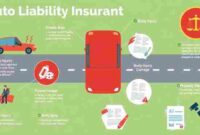Discover how collision coverage protects your car after accidents. Learn about this essential insurance that pays for damage to your own vehicle, providing peace of mind on the road.
Collision Coverage: Protect Your Car After Accidents
When an unexpected collision happens, the right car insurance can be a lifesaver. Collision coverage is a key part of a full auto insurance policy. It helps cover the cost of fixing your car after an accident. This article will explain what collision coverage is, why it’s important, and how it protects your car after a crash.
Key Takeaways
- Collision coverage pays for damages to your vehicle after an accident, regardless of who was at fault.
- It’s an essential coverage that helps cover the costs of repairing or replacing your car if it’s damaged in a collision.
- Collision coverage typically comes with a deductible, which is the amount you’ll need to pay out-of-pocket before your insurance kicks in.
- Factors like your vehicle’s age, value, and your driving record can impact the cost of collision coverage.
- Understanding the difference between collision and comprehensive coverage is crucial when selecting the right auto insurance policy.
What Is Collision Coverage?
Collision coverage is a key part of auto insurance that protects your car in accidents. It helps cover the costs of fixing or replacing your car after a crash. This includes damage from other cars, objects, or even hitting the ground.
Understanding the Basics
Collision coverage starts when your car gets damaged in an accident, no matter who’s to blame. It pays for the repairs or a new car, so you don’t have to pay everything yourself. It’s especially crucial if you use your car daily or have a newer, more expensive vehicle.
Why It’s Essential
- Protects your financial investment in your vehicle
- Covers the costs of repairing or replacing your car after an accident
- Ensures you can get back on the road quickly, minimizing the disruption to your daily life
- Provides peace of mind knowing you’re covered in the event of a car accident
In short, collision coverage basics protect your car, cover repair or replacement costs, and help you get back on the road after an accident. The importance of collision coverage is its role as a vital shield against the financial impact of car accident protection.
Collision Coverage: Pays for damage to the insured’s own car after an accident.
The main goal of collision coverage is to pay for fixing or replacing your car if it gets damaged in an accident. It’s different from liability coverage, which covers damage to someone else’s car. Collision coverage helps you avoid the high costs of fixing your car after a crash, offering you protection and peace of mind.
With collision coverage, your insurance will cover the costs of fixing or replacing your car if it’s damaged in an accident. This car damage after accidents coverage is key to a full auto insurance policy. It protects you from the high costs of insured vehicle repair coverage.
“Collision coverage is a crucial safety net for drivers, ensuring they don’t have to pay out of pocket for repairs to their own vehicle after an accident.”
Whether you hit another car or a fixed object, collision coverage pays for the repairs to your vehicle. It helps you stay on the road and reduces the financial hit from the accident.
With collision coverage, you know your insurance will help with the repair costs. This gives you peace of mind to focus on recovery and safely getting back on the road.
Common Scenarios Covered
Collision coverage protects you in many accident situations. It covers crashes with other cars and single-car accidents. If you hit another car, a guardrail, or lose control and hit a tree, it helps pay for repairs. Let’s look at the common times when collision coverage is really helpful.
Crashes with Other Vehicles
Collision coverage is great for accidents with other cars. If you hit another vehicle, it covers your car’s repairs, no matter who’s at fault. This multi-car accident protection means you won’t face all the repair costs alone.
Single-Vehicle Crashes
It also covers single-vehicle crash coverage. This includes accidents where you hit a fixed object, like a tree or pole. These single-vehicle crash scenarios can cause a lot of damage. Collision coverage helps with the repair costs, so you can drive again sooner.
| Collision Coverage Scenario | Financial Protection Provided |
|---|---|
| Crash with another vehicle | Repairs to your own car, regardless of fault |
| Single-vehicle collision (e.g., hitting a tree or guardrail) | Repairs to your car after a single-vehicle crash |
Knowing what collision coverage scenarios it covers helps you see its value. It’s key in keeping your vehicle safe and your finances stable after an accident.
Deductibles and Out-of-Pocket Costs
When it comes to collision coverage deductibles, there are a few key factors to consider. The deductible is the amount you’ll need to pay out-of-pocket before your insurance kicks in. Typical deductibles range from $250 to $1,000 or more. The higher the deductible, the lower your insurance premium will be.
Understanding deductibles is crucial in managing your out-of-pocket accident expenses. If you’re in a collision and need to file a claim, you’ll first pay the deductible. Then, your insurer will cover the remaining repair costs. This can greatly affect your financial responsibility after an accident.
| Deductible Amount | Impact on Premium |
|---|---|
| $250 | Higher premium |
| $500 | Moderate premium |
| $1,000 | Lower premium |
By choosing the right deductible, you can balance your monthly insurance costs and protection. This ensures you’re covered in case of a collision without breaking the bank.
“Choosing the right deductible can make a significant difference in your overall insurance costs and financial responsibility after an accident.”
Factors Affecting Collision Coverage Rates
Several factors can change how much you pay for collision coverage. The age and value of your car, and your driving record are key. Knowing these can help you choose the right insurance.
Vehicle Age and Value
Older cars with lower values cost less for collision coverage. This is because fixing or replacing an older car costs less than a newer, pricier one. Insurers consider the vehicle age and value impact on collision coverage costs.
Driving Record
Your driving history affects your collision coverage rates. Drivers with clean records, no accidents or tickets, pay less. Insurance companies watch driving history and premiums closely. They see a clean record as a sign of fewer future claims.
Knowing what affects collision coverage rates helps you make smart insurance choices. It also helps keep your driving record clean, which can lower your rates.
“Collision coverage is a crucial safeguard for protecting your vehicle, but the cost can vary depending on factors within your control.”
Filing a Collision Claim
If you’ve been in an accident and need to file a collision coverage claim, there are steps to follow. Documenting the incident and working with your insurance can seem tough. But, with the right steps, you can get your vehicle fixed quickly.
Steps to Take After an Accident
The first step is to ensure everyone’s safety and call the police. After that, document the accident by taking photos of the damage. Also, get the other driver’s info and a copy of the police report.
Collision Claim Processing
With the right info, start the claims process with your insurance. They’ll check the damage and decide how much to pay for filing your collision coverage claim. You might need to use an approved repair shop to fix your car.
The collision claim processing takes time, but your insurer will help. They’ll make sure your car is fixed right. By following the steps and working with your insurance, you can handle the steps after a car accident well.
Collision Coverage vs. Comprehensive Coverage
Auto insurance policies often mention “collision coverage” and “comprehensive coverage.” But they protect against different incidents. It’s key to know the differences between collision coverage vs comprehensive coverage to pick the best insurance for your car.
Collision coverage helps pay for damage from hitting something, like another car or a tree. It covers accidents, no matter who’s to blame. Comprehensive coverage, however, protects against non-collision events like theft, vandalism, or damage from natural disasters.
| Collision Coverage | Comprehensive Coverage |
|---|---|
| Pays for damage to your vehicle caused by a collision with another object | Covers non-collision related incidents like theft, vandalism, or natural disasters |
| Applies regardless of who is at fault | Covers damage from events outside of your control |
| Typically has a lower deductible than comprehensive coverage | Typically has a higher deductible than collision coverage |
The differences in auto insurance policies between collision and comprehensive coverage matter a lot. They affect how much you’ll pay out of pocket for accidents or other incidents. Knowing these differences helps you choose the right auto insurance for your needs and budget.
“Collision coverage and comprehensive coverage are both essential components of a well-rounded auto insurance policy, but they serve different purposes. Knowing the nuances between the two can help you choose the right coverage for your driving needs.”
Tips for Keeping Costs Down
Collision coverage is key for your vehicle’s safety, but it can be pricey. Luckily, there are ways to cut down on costs without sacrificing protection. Here are some tips to help you save on collision coverage.
Safe Driving Habits
Safe driving is a big step towards lower collision coverage costs. By avoiding accidents and traffic tickets, you show your insurer you’re a careful driver. This can lead to cheaper premiums. Here are some safe driving tips:
- Always follow traffic laws and speed limits.
- Keep a safe distance from other cars.
- Don’t use your phone while driving.
- Stay alert and focused on the road.
Comparing Quotes
Shopping around for quotes is another smart move. Rates differ a lot between insurers. Getting quotes from several companies can help you find the best price. When comparing, look at:
- Deductible amounts
- Coverage limits
- Discounts or bundling options
By driving safely and comparing quotes, you can save money. You’ll still have protection in case of an accident.
Conclusion
Collision coverage is key to a good auto insurance policy. It gives you financial safety if you’re in an accident. Knowing how it works and what affects its cost helps drivers protect their cars better.
This article shows why summary of collision coverage importance matters. It also gives tips to keep costs down while still getting the right coverage. By following these tips, drivers can find the best balance of protection and price for their needs.
Collision coverage is a safety net against the unexpected. It brings peace of mind and financial help when accidents happen. By making it a part of a strong auto insurance plan, drivers can feel secure and protected on the road.
FAQ
What is collision coverage?
Collision coverage is a part of auto insurance. It covers the cost of fixing or replacing your car after a crash. It’s key to avoid big repair bills after an accident.
Why is collision coverage important?
It’s important because it saves you money on car repairs after an accident. It gives you peace of mind and helps you get back on the road fast.
What types of accidents does collision coverage typically cover?
It covers many types of accidents. This includes crashes with other cars and single-car accidents. It helps pay for repairs, no matter the cause.
How do deductibles and out-of-pocket costs work with collision coverage?
You’ll pay a deductible when you file a claim. This is the amount you cover before insurance kicks in. Deductibles can be $250 to $1,000 or more. Higher deductibles mean lower premiums but more costs for repairs.
What factors affect the cost of collision coverage?
Several things affect the cost. The age and value of your car matter. So does your driving record. Newer, more expensive cars cost more to insure. Your driving history also plays a role.
What’s the difference between collision coverage and comprehensive coverage?
Collision and comprehensive coverages are different. Collision covers damage from crashes with other objects. Comprehensive covers damage from theft, vandalism, or natural disasters.
How can I keep my collision coverage costs down?
To save money, drive safely and avoid accidents. Compare insurance quotes to find the best rate. These steps can help you save on collision coverage.




